
Wine Culture and Information since 2002 - Volume 22
 Wine Culture and Information since 2002 - Volume 22 |
|
Issue 200, November 2020 |
Contents |
|
|
Two Hundred Times DiWineTaste! |
|
Two hundred. The DiWineTaste issue you are reading marks an important and significant moment for our publication as it is the 200th issue. Two hundred issues. A milestone that we reach in the nineteenth year of our publishing activity, a long journey began in September 2002. In the past, in the pages of our publication, it has already happened that I told the birth of DiWineTaste and some of the most significant moments of our activity. DiWineTaste showed up to the wine lovers of the WEB exactly on 9 September 2002 at 10:10 PM. At that time, the offer of wine review and information on the Internet was very small and DiWineTaste has certainly been one of the first periodicals of the WEB to report the world of wine and to publish wine reviews on a monthly basis. In short, not a simple website, indeed a digital and periodic publication completely dedicated to wine. To further underline the nature of digital publication, therefore to be read and printed, DiWineTaste, at the beginning of its life, was only available in Adobe Portable Document Format, that is, PDF. The event of the publication of the website and the first issue of DiWineTaste was greeted with a glass of Marsala Vergine vintage 1987, a wine that has always been one of my favorite ones and therefore absolutely perfect for such a significant and important event. Those who know me also know Marsala Vergine is one of my favorite wines, a wine I have always treasured in my heart and that, when it is worthy of its name, is capable of endless emotions. The beginning of DiWineTaste was decidedly encouraging: the first issue was downloaded by over six thousand readers and it even caught the interest of the press with the publication of reports that were expressly talking about us and our editorial project. Those who read that first issue also expressed their appreciation for our job: our mailbox was literally flooded with messages. We answered to each one of them, with time and patience, despite the fact emails were delivered every day to our box. Many of them had ideas that we kept and set aside for “future developments”. With time, many of our readers' ideas and suggestions have been implemented and this is something we have never stopped doing. Just as our readers have never stopped sending us their emails with ideas and suggestions. The first version of DiWineTaste website was definitely far from what it has become over time: looking at it today is like watching a kid in its childhood, evoking emotions and memories that even today is capable to bring back to life, vivid and unchanged in my mind. It must be said, in fact, all the versions of the websites and of the layout styles are stored internally in our systems and kept as historical records of what has been done and how we were. If it is true the website has changed over time, offering new services and features, one thing has never changed since the beginning: the use of LATEX2ε for the composition of the magazine, both in PDF format and on the website. This name will probably say very little to many, or maybe nothing, however it is the central tool of the composition of each issue and is a milestone and powerful giant of digital publishing, with almost endless versatility and functionality. Over the course of our two hundred issues – almost twenty years – many things have been accomplished and much has changed in our editorial activity and in the services offered to our readers. One of the activities that I wanted to start since the very beginning, with the foundation of DiWineTaste, have been the events, chances for our readers to meet and get to know the producers and wines that we were publishing in the pages of our magazine and Guide. In fact, I have always been convinced that, to truly understand a wine and the emotions it can arouse and communicate in each of us, reading and words are not enough. They certainly help to get an idea and to get to know a wine and who make it in a preliminary way, however they are always far from what the glass directly tells to each one of us. At this moment, unfortunately, due to the epidemiological emergency from Covid-19, our events are suspended, however – and I say this with pride and satisfaction – in these twenty years we have given our readers the chance to taste over 1000 wines from about 200 wineries, of course, all of them reviewed in DiWineTaste. There have been, of course, other significant moments that marked our editorial activity, all with the aim of offering our readers new possibilities of interaction and usability of the services. Including the development and release of the apps for Android and iOS mobile devices, followed shortly after by the publication of our podcast. This channel, in fact, has been specifically thought for the use with the app, therefore giving our readers the chance to listen to each episode straight from their mobile devices. The statistics of daily use of our apps confirm it has been the right choice and, above all, appreciated by our readers. The use of DiWineTaste services is in fact today divided almost equally between the website and the apps, in particular, the apps of mobile devices records a more intense use in the evening hours. The browsing of our Guides, in fact, and in particular, the food and wine pairing tool of the Wine Guide – available on our site since 2002 – records the greatest frequency of use right in the evening hours. What about our EnoGames? It is, without a doubt, one of the most appreciated services of DiWineTaste along with Wine and Spirit Guides. It seems our readers really like to test their knowledge about wine – both on the site and in the app – with the countless quizzes of our EnoGames, in particular, EnoQuiz. With its 1200 questions, EnoQuiz catches the interest of our readers and, they tell us, they are even used for “competitions” with friends and to prepare to pass examinations about professions related to wine. Last but not least, and certainly very important, as it is the fundamental and central element of DiWineTaste, the monthly publication which, as of today, has an average of 155,000 total monthly readers for the Italian and English editions. When I founded DiWineTaste in 2002, I certainly had a very different project in mind and of what it is today. Time and, above all, the ideas and feedback from our readers, have shown us the right way to go. One thing, however, in all this time, has never changed: our vision of the critical evaluation of wine and how we organize tasting sessions. I in fact strongly believe the most reliable and honest method is using the so called blind tasting method, a fundamental requirement for us and to which we have never made exceptions. All the wines and spirits published in the course of these 200 issues in our Guides are the result of this method. Applied to all wines and producers, it remains the indispensable foundation for our way of making information and review wines. Without exception, although it has happened – to tell the truth, more and more frequently in the last years – that producers request the tasting of their wines in their wineries as they do not want to ship the wines to our office, therefore to submit them to the consequent and strict evaluation of “blind tasting”. These are choices we of course respect, but we do not consider fair or honest to grant or make exceptions in this sense, both towards our readers and the producers present in our Guides. We follow our path, without claiming it can be shared by everyone or considered the right one, we are however aware every wine and producer must be considered and treated in the same way. Right or wrong, it has taken us this far and will certainly continue to accompany us in our future journey. A future that also starts from this issue number 200 and that we want to celebrate with all our readers and all the producers who have trusted us and the way we do our job. A toast, therefore, to all of you and also to us for this two hundredth time of DiWineTaste! Antonello Biancalana
|
||||
Contrasts of Colli Orientali del Friuli Merlot and TaurasiTwo grapes having a different character – Merlot and Aglianico – and two distant territories compared in the glasses of this month's tasting by contrast |
|
What do Merlot and Aglianico have in common? Nothing, apart from the color. Even the origin of these two varieties is decidedly distant from a geographical point of view: Merlot is notoriously from France – in the Bordeaux area – Aglianico is one of the many grapes in Italy and introduced from Greece in ancient times, or this is what it is believed. In fact, it must be said that, according to some modern research conducted on the DNA of Aglianico, it was not possible to find any similarity with other Greek varieties, thus doubting its Hellenic origin. However, the thing of which we are certain of, is that Aglianico is variety already known in ancient times. In fact, Horace – the famous poet of ancient Roman times – mentioned this magnificent grape. He wrote Aglianico was highly appreciated at that time in his hometown Venosa, in Basilicata, for its excellent wines. The origin of this variety remains uncertain and, if it is true that many believe it originates from Greece, it is also true that in this country there is no variety similar to Aglianico or that has a genetic link with this grape. The history of Merlot is quite different, which origin is considered by all to be in the land of Bordeaux, despite the relatively recent written mentions referring to this variety. The first evidence dates back to the 1700s, however the first written mention dates back to 1824 and in which the grape is mentioned with the name of merlau. The name, which will later become Merlot, derives from merle (French for blackbird), due to the black and dark color of the berries similar to the feathers of this bird. Merlot is undeniably the most famous red grape in the wine scene, virtually found in every wine-growing country in the world. Its massive spreading is due both to its charming and accommodating character, capable of making wines with a pleasant roundness, and for reasons of emulation, that is the explicit intent of recreating the elegance and charm of certain Bordeaux wines. Furthermore, Merlot's outstanding quality of marrying almost perfectly with wood – in particular, the barrique – has further contributed to the spreading of the grape and its appreciated round style which is undeniably characteristic in its wines.
|
|
The so-called allochthonous varieties – mainly of French origin – have established long relationship with the north-eastern territories of Italy. Introduced at the end of the 1800s, when the fearsome phylloxera was raging in Europe and which destroyed most of the vineyards of the old continent, Merlot was one of the first varieties used for the repopulation of vineyards in the north-eastern territories of Italy, including Friuli Venezia-Giulia. The success of these “new varieties” has been striking and, in many cases, they even replaced the surviving local varieties, so much so that they were uprooted in order to make room for the new French “miracle varieties”. In fact, it was not just the need to revive the vineyards severely affected by phylloxera, but also to emulate the style and success of French wines and, in this sense, Merlot is the red grape variety that, more than any other, has been successful. The presence of this grape is still well widespread today, so much so that, in the territory of the Colli Orientali del Friuli, is even part of many Denominazione d'Origine Controllata (Denomination of Controlled Origin, DOC) wines of this area. Merlot has a long-established relationship with the viticulture of Friuli Venezia-Giulia and is widely present in the vineyards of the region, as well as being part of its DOC wines, both alone and combined with other varieties. The vinification of Merlot in Friuli Venezia-Giulia – and therefore also in the territory of the Colli Orientali del Friuli – follows the wine making models typically applied to this variety, that is, fermentation and aging in wooden barrels, in particular, the barrique. Colli Orientali del Friuli Merlot obviously does not betray the nature of the famous Bordeaux grape and in its wines it is evidently perceptible the typical roundness as well as the aromas of black currant, black cherry and plum. The contribution of wood further accentuates both the roundness of Merlot and the structure of the wine which, in many cases, can be considered robust. The influence of the climate of Friuli Venezia-Giulia also gives Merlot a character of elegant crispness which completes the typical roundness of the grape by making it reach a perfect balance.
|
||||
|
Taurasi is undeniably one of the wine glories of the province of Avellino and, of course, of Campania. Produced with Aglianico, Taurasi has been the first Italian wine produced with this grape to obtain the recognition of Denominazione d'Origine Controllata e Garantita rank (Denomination of Controlled and Guaranteed Origin, DOCG). A robust and elegant wine, the famous red made in the province of Avellino is produced – according to its production disciplinary – with Aglianico grapes for a minimum of 85% and it also provide for the riserva style. The remaining 15% of the composition of Taurasi can include red berried grapes authorized for cultivation in the province of Avellino. In this regard, it should be noted that, although the disciplinary of Taurasi does not provide for the use of 100% Aglianico, almost all producers choose to use this variety alone in their wines. A clearly right choice favoring the full expression of Aglianico without unnecessary interference. Taurasi, according to the production disciplinary, must age for at least 12 months in cask, a period that extends to 18 months in the case of the Riserva style. The wine takes the name of Taurasi from the homonymous municipality in the province of Avellino, however its production is also allowed in other municipalities of the territory, all in the province of Avellino. Taurasi, when produced with 100% Aglianico, is a wine capable of power and elegance, thanks both to the aging which requires the use of wood, and to the characteristic acidity of the grape. The crispness of Aglianico, in fact, pleasantly contributes to the personality of the wine as well as to balance of roundness given by wood and alcohol. In any case, these are specific styles and choices of producers who, by controlling the ripening of the grapes, the use of wood and the aging time, create Taurasi wines with different personalities and in which the crispness factor of Aglianico is variable. There are in fact Taurasi wines in which the acidity of Aglianico is well perceptible, while others tend to favor roundness, although the typical crispness of the grape is always present in the gustatory profile of Taurasi.
|
The choice of wines for this month's tasting by contrast is decidedly simple because, in both cases, the possibilities of choice are virtually countless. Colli Orientali del Friuli Merlot and Taurasi can in fact be easily found in the shelves of shops and therefore it will not be difficult to find the bottles to pour into our glasses. In both cases, we will choose wines aged with the same wine making procedure and the same type of containers. We should in fact consider Taurasi must be aged in casks or in barrique, therefore the choice of Colli Orientali del Friuli Merlot will follow the same criterion. It is very likely the Friulian wine is aged in wood, a practice which is very common with Merlot. However, we will pay attention to the type of container, favoring the choice of wines aged in casks. As for the vintage, the wines should not be more than three years old and, moreover, as for Taurasi we will make sure it is produced with 100% Aglianico. The two wines are poured into their respective tasting glasses at a temperature of 18 °C. (65 °F) We can now pour Colli Orientali del Friuli Merlot and Taurasi into their respective glasses and start the tasting. The first sensorial quality we will examine is, as usual, the appearance of the wine, therefore color and transparency. The first wine we take into consideration is the Friulian one, so let's tilt its glass over a white surface. Let's observe the base of the glass: Colli Orientali del Friuli Merlot has an intense ruby red color, sometimes deep, and a low transparency, making quite difficult to see the object placed in contrast between the glass and the white surface. Let's now observe the edge of the wine, towards the opening of the glass, which confirms the base color, that is ruby red. Let's now pass to the evaluation of the appearance of Taurasi, produced with Aglianico grape. The wine from Campania shows to our eyes an intense and brilliant ruby red color, generally with a higher transparency than Merlot. The nuance of Taurasi – observed at the edge of the wine, towards the opening of the glass – confirms the base color, sometimes with a garnet red hue. The olfactory profiles of Merlot and Aglianico – therefore of Colli Orientali del Friuli Merlot and Taurasi – are decidedly distant. Both varieties are very common, including Aglianico which is practically found in all regions of southern Italy. The olfactory profiles of these two grapes are in fact influenced by climate and soil, a characteristic that is particularly true in Merlot due to its massive planetary spreading. The famous Bordeaux grape, in fact, although it is always characterized by aromas of dark pulp fruit – black currant, black cherry and plum, in particular – in certain climatic and ripening conditions can develop vegetable aromas and which may recall, in some cases, bell pepper. Even the olfactory profile of Aglianico is oriented towards sensations of dark pulp fruit, however in this grape one can mainly recognize black cherry, blackberry and blueberry, often accompanied by plum and raspberry. The world of flowers is well represented in both varieties with hints of violet and, in Merlot, it can also be perceived the scent of iris. Let's resume the tasting by contrast of this month and evaluate the olfactory profiles of the two wines, starting – just like the previous phase – from Colli Orientali del Friuli Merlot. Let's hold the glass in vertical position and, without swirling, let's do the first smell which will allow us to evaluate the attack, that is the preliminary and identifying olfactory sensations of the wine. From the glass we can perceive intense and clean aromas of black currant, plum and black cherry, followed by the pleasing aroma of violet. Let's swirl the glass and proceed with the second smell: the olfactory profile of the Friulian wine is completed with blueberry, iris as well as sensations typically conferred by the aging in wood, in particular vanilla, chocolate and the balsamic touch of eucalyptus. Let's move on to the olfactory evaluation of Taurasi and, still by holding the glass in vertical position, let's analyze the opening. To the nose is perceived intense and clean aromas of black cherry, blackberry and blueberry, followed by the elegance of the aroma of violet. After having swirled the glass and performed the second smell, the profile of Taurasi is completed with blueberry, raspberry and cyclamen, as well as the tertiary qualities of the aging in wood, including vanilla, chocolate and the balsamic touch of menthol. Let's move on to the evaluation of the gustatory profiles of Colli Orientali del Friuli Merlot and Taurasi, starting with the Friulian wine. Let's take a sip and evaluate the attack, that is the initial sensations the wine produces in the mouth. Merlot can be recognized to the taste for its unmistakable roundness, a sensation certainly accentuated also by the contribution of alcohol and the aging in wood. The structure of the wine is good and in the mouth are perceived flavors of black currant, black cherry and plum, with a decidedly low acidity and the astringency of tannins is pleasantly round. Let's now proceed with the evaluation of the gustatory profile of Taurasi, take a sip of this wine and let's focus on the attack. In the mouth, compared to Colli Orientali del Friuli Merlot, we immediately notice the weaker sensation of roundness and a stronger intensity of crispness given by acidity. The structure of Taurasi is decidedly good, generally more robust than the Friulian wine. In the mouth we perceive, intense and clean, the flavors of black cherry, blackberry and plum. Let's finish the tasting by contrast of Colli Orientali del Friuli Merlot and Taurasi by evaluating the sensations the two wines leave in the mouth after swallowing, in particular the taste-olfactory persistence. The finish of the Friulian Merlot is very good and in the mouth it leaves clean flavors of black currant, black cherry and plum, to which is added – very clean – the sensation of roundness typical of this variety. The perception of astringency is rather round, both because of the effect of the wine's roundness, and to the aging in wood and time. The finish of Taurasi is equally good and in the mouth can be perceived flavors of black cherry, blackberry and blueberry, often followed by raspberry. The pleasing sensation of crispness given by acidity continues to be perceived as well as the good perception of astringency produced by tannins. Even in the final phase, the sensation of roundness of the two wines is clearly distant and different, just like all the other organoleptic qualities of Colli Orientali del Friuli Merlot and Taurasi.
|
||||||||
Wines of the Month |
|
|
|
Score legend Prices are to be considered as indicative. Prices may vary according to the country or the shop where wines are bought |
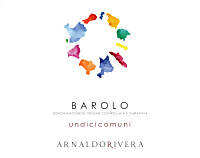
|
|
Barolo Undicicomuni 2016 |
|
| Arnaldo Rivera (Piedmont, Italy) | |
 Nebbiolo Nebbiolo | |
| Price: € 30.00 | Score: |
 Brilliant ruby red and nuances of garnet red, moderate transparency. Brilliant ruby red and nuances of garnet red, moderate transparency. Intense, clean, pleasing, refined and elegant, starts with hints of
cherry, plum and rose followed by aromas of raspberry, strawberry, violet,
blueberry, tobacco, chocolate, cinnamon, licorice, vanilla and menthol. Intense, clean, pleasing, refined and elegant, starts with hints of
cherry, plum and rose followed by aromas of raspberry, strawberry, violet,
blueberry, tobacco, chocolate, cinnamon, licorice, vanilla and menthol.
 Tannic attack and however balanced by alcohol, full body, intense
flavors, pleasing crispness. Tannic attack and however balanced by alcohol, full body, intense
flavors, pleasing crispness.
 Persistent finish with flavors of cherry, plum and raspberry. Persistent finish with flavors of cherry, plum and raspberry. 26 months in cask, 6 months in cement tanks. 26 months in cask, 6 months in cement tanks. |
|
 Game, Roasted meat, Stewed and braised meat with mushrooms, Hard cheese Game, Roasted meat, Stewed and braised meat with mushrooms, Hard cheese |
|
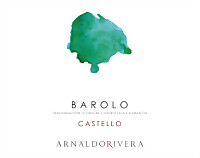
|
|
Barolo Castello 2016 |
|
| Arnaldo Rivera (Piedmont, Italy) | |
 Nebbiolo Nebbiolo | |
| Price: € 45.00 | Score: |
 Intense ruby red and nuances of garnet red, moderate transparency. Intense ruby red and nuances of garnet red, moderate transparency. Intense, clean, pleasing, refined and elegant, starts with hints of
cherry, plum and dried violet followed by aromas of blueberry, anise,
cinnamon, cocoa, tobacco, cigar box, licorice, leather, rubber, mace,
vanilla and menthol. Intense, clean, pleasing, refined and elegant, starts with hints of
cherry, plum and dried violet followed by aromas of blueberry, anise,
cinnamon, cocoa, tobacco, cigar box, licorice, leather, rubber, mace,
vanilla and menthol.
 Tannic attack and however balanced by alcohol, full body, intense
flavors, pleasing crispness. Tannic attack and however balanced by alcohol, full body, intense
flavors, pleasing crispness.
 Persistent finish with flavors of plum, cherry and blueberry. Persistent finish with flavors of plum, cherry and blueberry. 32 months in cask. 32 months in cask. |
|
 Game, Roasted meat, Stewed and braised meat with mushrooms, Hard cheese Game, Roasted meat, Stewed and braised meat with mushrooms, Hard cheese |
|
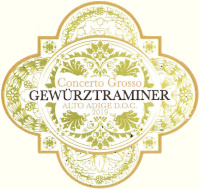
|
|
Alto Adige Gewürztraminer Concerto Grosso 2019 |
|
| Elena Walch (Alto Adige, Italy) | |
 Gewürztraminer Gewürztraminer | |
| Price: € 21.60 | Score: |
 Brilliant straw yellow and nuances of straw yellow, very transparent. Brilliant straw yellow and nuances of straw yellow, very transparent. Intense, clean, pleasing, refined and elegant, starts with hints of
grape, white rose and honey followed by aromas of peach, apple, lychee,
pear, pineapple, mango, citrus fruits, candied fruits and sage. Intense, clean, pleasing, refined and elegant, starts with hints of
grape, white rose and honey followed by aromas of peach, apple, lychee,
pear, pineapple, mango, citrus fruits, candied fruits and sage.
 Crisp attack and however balanced by alcohol, good body, intense
flavors, pleasing roundness. Crisp attack and however balanced by alcohol, good body, intense
flavors, pleasing roundness.
 Persistent finish with flavors of grape, peach and honey. Persistent finish with flavors of grape, peach and honey. Aged in steel tanks. Aged in steel tanks. |
|
 Mushroom soups, Stewed fish with mushrooms, Roasted white meat, Broiled crustaceans Mushroom soups, Stewed fish with mushrooms, Roasted white meat, Broiled crustaceans |
|
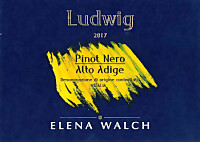
|
|
Alto Adige Pinot Nero Ludwig 2017 |
|
| Elena Walch (Alto Adige, Italy) | |
 Pinot Nero Pinot Nero | |
| Price: € 34.50 | Score: |
 Brilliant ruby red and nuances of ruby red, moderate transparency. Brilliant ruby red and nuances of ruby red, moderate transparency. Intense, clean, pleasing, refined and elegant, starts with hints of
cherry, plum and raspberry followed by aromas of strawberry, cyclamen,
violet, blueberry, cinnamon, chocolate, tobacco, vanilla, graphite and
menthol. Intense, clean, pleasing, refined and elegant, starts with hints of
cherry, plum and raspberry followed by aromas of strawberry, cyclamen,
violet, blueberry, cinnamon, chocolate, tobacco, vanilla, graphite and
menthol.
 Properly tannic attack and however balanced by alcohol, good body,
intense flavors, pleasing crispness. Properly tannic attack and however balanced by alcohol, good body,
intense flavors, pleasing crispness.
 Persistent finish with flavors of cherry, plum and raspberry. Persistent finish with flavors of cherry, plum and raspberry. 12 months in barrique. 12 months in barrique. |
|
 Stuffed pasta with mushrooms, Roasted meat, Stewed meat with mushrooms, Cheese Stuffed pasta with mushrooms, Roasted meat, Stewed meat with mushrooms, Cheese |
|
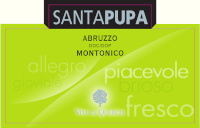
|
|
Abruzzo Montonico Superiore Santapupa 2019 |
|
| La Quercia (Abruzzo, Italy) | |
 Montonico Montonico | |
| Price: € 15.00 | Score: |
 Intense straw yellow and nuances of straw yellow, very transparent. Intense straw yellow and nuances of straw yellow, very transparent. Intense, clean, pleasing and refined, starts with hints of apple, plum
and citrus fruits followed by aromas of hawthorn, medlar, pear, peach,
broom and pineapple. Intense, clean, pleasing and refined, starts with hints of apple, plum
and citrus fruits followed by aromas of hawthorn, medlar, pear, peach,
broom and pineapple.
 Crisp attack and however balanced by alcohol, good body, intense
flavors, agreeable. Crisp attack and however balanced by alcohol, good body, intense
flavors, agreeable.
 Persistent finish with flavors of apple, plum and medlar. Persistent finish with flavors of apple, plum and medlar. 4 months in steel tanks, 2 months in bottle. 4 months in steel tanks, 2 months in bottle. |
|
 Mushroom soups, Sauteed white meat, Sauteed fish, Eggs, Dairy products Mushroom soups, Sauteed white meat, Sauteed fish, Eggs, Dairy products |
|

|
|
Montepulciano d'Abruzzo Riserva Colline Teramane Mastrobono 2010 |
|
| La Quercia (Abruzzo, Italy) | |
 Montepulciano Montepulciano | |
| Price: € 35.00 | Score: |
 Deep ruby red and nuances of garnet red, little transparency. Deep ruby red and nuances of garnet red, little transparency. Intense, clean, pleasing, refined and elegant, starts with hints of
prune, black cherry jam and dried violet followed by aromas of blueberry
jam, carob, cocoa, tobacco, leather, graphite, licorice, menthol and
vanilla. Intense, clean, pleasing, refined and elegant, starts with hints of
prune, black cherry jam and dried violet followed by aromas of blueberry
jam, carob, cocoa, tobacco, leather, graphite, licorice, menthol and
vanilla.
 Properly tannic attack and however balanced by alcohol, full body,
intense flavors, pleasing roundness. Properly tannic attack and however balanced by alcohol, full body,
intense flavors, pleasing roundness.
 Persistent finish with flavors of prune, black cherry jam and blueberry
jam. Persistent finish with flavors of prune, black cherry jam and blueberry
jam.
 7 months in steel tanks, 36 months in cask, 12 months in bottle. 7 months in steel tanks, 36 months in cask, 12 months in bottle. |
|
 Game, Roasted meat, Stewed and braised meat, Hard cheese Game, Roasted meat, Stewed and braised meat, Hard cheese |
|
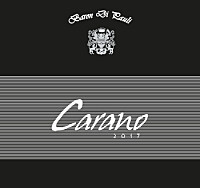
|
|
Alto Adige Lagrein Riserva Carano Vigna Arzenhof 2017 |
|
| Baron Di Pauli (Alto Adige, Italy) | |
 Lagrein Lagrein | |
| Price: € 29.00 | Score: |
 Deep ruby red and nuances of ruby red, little transparency. Deep ruby red and nuances of ruby red, little transparency. Intense, clean, pleasing, refined and elegant, starts with hints of
black cherry, blackberry and black currant followed by aromas of violet,
plum, blueberry, cocoa, tobacco, coriander, leather, licorice, mace,
vanilla and menthol. Intense, clean, pleasing, refined and elegant, starts with hints of
black cherry, blackberry and black currant followed by aromas of violet,
plum, blueberry, cocoa, tobacco, coriander, leather, licorice, mace,
vanilla and menthol.
 Properly tannic attack and however balanced by alcohol, full body,
intense flavors, pleasing roundness. Properly tannic attack and however balanced by alcohol, full body,
intense flavors, pleasing roundness.
 Persistent finish with flavors of blackberry, black cherry and black
currant. Persistent finish with flavors of blackberry, black cherry and black
currant.
 16 months in barrique. 16 months in barrique. |
|
 Game, Roasted meat, Stewed and braised meat, Hard cheese Game, Roasted meat, Stewed and braised meat, Hard cheese |
|
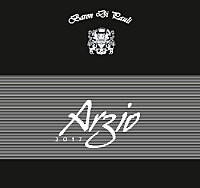
|
|
Alto Adige Cabernet Merlot Riserva Arzio Vigna Arzenhof 2017 |
|
| Baron Di Pauli (Alto Adige, Italy) | |
 Merlot (60%), Cabernet Sauvignon (40%) Merlot (60%), Cabernet Sauvignon (40%) | |
| Price: € 35.00 | Score: |
 Intense ruby red and nuances of ruby red, little transparency. Intense ruby red and nuances of ruby red, little transparency. Intense, clean, pleasing, refined and elegant, starts with hints of
black currant, black cherry and violet followed by aromas of plum,
blueberry, iris, chocolate, tobacco, juniper, mace, vanilla and eucalyptus. Intense, clean, pleasing, refined and elegant, starts with hints of
black currant, black cherry and violet followed by aromas of plum,
blueberry, iris, chocolate, tobacco, juniper, mace, vanilla and eucalyptus.
 Properly tannic attack and however balanced by alcohol, full body,
intense flavors, pleasing roundness. Properly tannic attack and however balanced by alcohol, full body,
intense flavors, pleasing roundness.
 Persistent finish with flavors of black currant, black cherry and
plum. Persistent finish with flavors of black currant, black cherry and
plum.
 18 months in barrique. 18 months in barrique. |
|
 Game, Roasted meat, Stewed and braised meat, Hard cheese Game, Roasted meat, Stewed and braised meat, Hard cheese |
|
News |
|
In this section are published news and information about events concerning the world of wine and food. Whoever is interested in publishing this kind of information can send us a mail to our address.
|
AquavitaeReview of Grappa, Distillates and Brandy |
|
|
||||||||||||||
Wine Guide ParadeSummer 2020
|
| |||||||
Privacy Policy | |||||||


| Copyright © 2002-2024 Antonello Biancalana, DiWineTaste - All rights reserved |
| All rights reserved under international copyright conventions. No part of this publication and of this WEB site may be
reproduced or utilized in any form or by any means, electronic or mechanical, without permission in writing from DiWineTaste. |